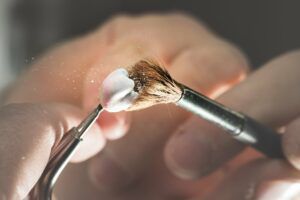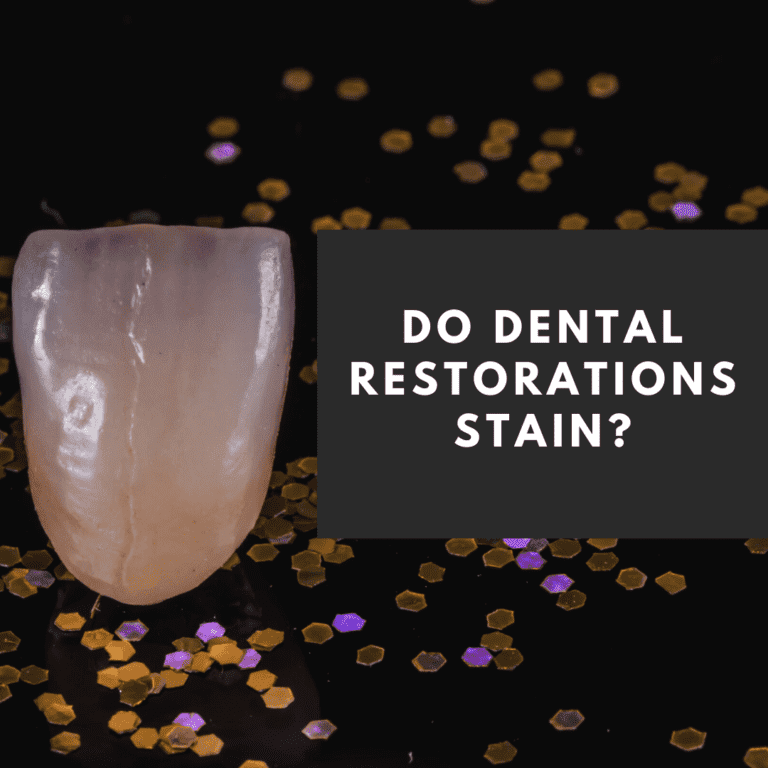Have you ever wondered whether your new dental restoration will eventually become stained over time? Just because all dental restorations can become stained does not necessarily mean that they will. In fact, certain restorations are more likely to stain than others based on the dental materials that they are made from. However, there are ways to prevent stains even on dental restorations that are more likely to stain. Let’s take a look at two common dental materials used for dental restorations, as well as tips to prevent these materials from staining.
Composite Resin

One of the first commonly used dental materials is composite resin. Composite resin is extremely versatile and can be placed in as little as one dental appointment. Composite restorations can be fabricated directly in the mouth, which is why they are known as direct restorations. The most common uses for composite resin are composite fillings, composite veneers, and to repair minor chips or cracks.
Although composite resin can be customized to match the exact color of your teeth, it is possible that this color will change over time due to staining. Composite resin is especially prone to developing stains from highly pigmented beverages like coffee or red wine. Over time, this may give the restoration a brown or red tint. However, the pigments found in these beverages can also stain your tooth enamel, so you may not be able to notice the stain on the restoration.
Composite fillings may also form stains along the border between the composite resin and the natural tooth structure. This can happen when the border between the two has become rough and starts to trap bacteria and food particles. If you ever notice stains around the border of your restoration, this means that you should have your dentist examine the restoration.
The best way to prevent stains from forming on composite resin is to minimize the amount of highly pigmented foods and beverages you consume. It is also recommended to rinse your mouth with water after consuming beverages like coffee or red wine, which have been known to cause stains. As a final note, regular brushing, flossing, and dental cleanings will help to control plaque buildup and reduce staining.
Porcelain

Another aesthetic material used to fabricate dental restorations is porcelain. Porcelain is often used to fabricate indirect restorations, that are first fabricated outside of the mouth before being cemented in place. These restorations include crowns, bridges, inlays, onlays, and veneers. Besides its strength, one of the reasons why porcelain is used for these dental restorations is because of its resistance to stains.
When properly cared for, porcelain restorations do not stain like composite restorations. With that being said, however, porcelain restorations can develop stains if the outer glaze becomes damaged or worn. Because of this, it is important to avoid damaging your porcelain restoration in order to prevent it from staining. Things like highly abrasive toothpaste, acidic foods and beverages, alcoholic beverages, or brushing too hard can all wear down the glaze and lead to staining. Regularly eating hard candies, smoking, or using your teeth as tools can also cause damage to the porcelain and increase the risk of stains.




